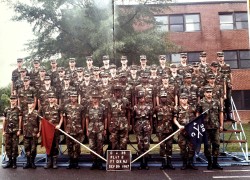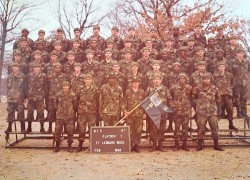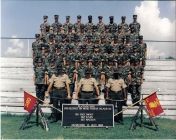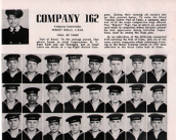Microwave Systems Installer-Maintainers are primarily responsible for installing, operating and maintaining microwave communications systems. They also work with associated antennas, multiplexing and communications security equipment.
25P1O - Skill Level One




Circuit Controller: Configures, aligns, operates, and performs unit level and direct support maintenance on microwave communications and technical control equipment, and associated devices. Monitor, fault isolates, and restores telecommunications circuits, trunk groups, systems, and associated commercial and military interface equipment. Maintain circuit, link, system, and station records and reports.
Microwave Operator Maintainer: Aligns and performs unit level and direct support maintenance on microwave communications and associated devices. Perform maintenance and systems troubleshooting on Digital Group Multiplexer (DGM), TROPO and Mobile Subscriber Equipment (MSE). Performs strapping, restrapping, and preventive maintenance checks and services (PMCS) and limited maintenance on COMSEC devices. Performs PMCS on assigned communications telecommunications equipment, vehicles, and power generators.
Microwave Operator Maintainer: Aligns and performs unit level and direct support maintenance on microwave communications and associated devices. Perform maintenance and systems troubleshooting on Digital Group Multiplexer (DGM), TROPO and Mobile Subscriber Equipment (MSE). Performs strapping, restrapping, and preventive maintenance checks and services (PMCS) and limited maintenance on COMSEC devices. Performs PMCS on assigned communications telecommunications equipment, vehicles, and power generators.
25P2O - Skill Level Two

Circuit Control Team Chief: Responsible for assigned equipment and subordinate soldiers. Configures, aligns, operates, and performs unit level and direct support maintenance on microwave communications and technical control equipment, and associated devices. Monitor, fault isolates, and restores telecommunications circuits, trunk groups, systems, and associated commercial and military interface equipment. Maintain circuit, link, system, and station records and reports.
Microwave Team Chief: Supervisor responsible for assigned equipment and subordinate soldiers. Perform complex microwave system troubleshooting and maintenance tasks. Provides technical assistance to personnel engaged in the operation and maintenance of microwave communications systems. Supervises and assists subordinates in the performance of PMCS on assigned communications equipment, vehicles, and power generators. Requests logistic support and evacuates equipment to higher level maintenance facilities, when required.
Microwave Team Chief: Supervisor responsible for assigned equipment and subordinate soldiers. Perform complex microwave system troubleshooting and maintenance tasks. Provides technical assistance to personnel engaged in the operation and maintenance of microwave communications systems. Supervises and assists subordinates in the performance of PMCS on assigned communications equipment, vehicles, and power generators. Requests logistic support and evacuates equipment to higher level maintenance facilities, when required.
25P3O - Skill Level Three

Circuit Control Supervisor: Supervisor responsible for assigned equipment and subordinate soldiers. Oversees operation and maintenance on microwave communications and technical control equipment and associated devices.
Circuit Operations SGT: Performs or supervises quality control and technical evaluation inspections. Implement restoration priorities for circuit, trunk, and system outages.
Maintenance Team Chief: Responsible for assigned equipment and subordinate soldiers. Supervise the maintenance, troubleshooting and systems analysis of microwave communications. Supervises direct support maintenance on associated equipment and unit level maintenance on COMSEC devices.
Circuit Operations SGT: Performs or supervises quality control and technical evaluation inspections. Implement restoration priorities for circuit, trunk, and system outages.
Maintenance Team Chief: Responsible for assigned equipment and subordinate soldiers. Supervise the maintenance, troubleshooting and systems analysis of microwave communications. Supervises direct support maintenance on associated equipment and unit level maintenance on COMSEC devices.
25P4O - Skill Level Four

Circuit Management NCO: Supervises, plans, and directs the installation, operation, and maintenance activities of microwave communications and technical control systems and facilities. Provide technical advice and assistance to subordinates. Develops and conducts training for subordinate personnel.
Maintenance Chief: Supervises, plans, and directs maintenance activities of microwave communications and technical control systems and facilities. Provide technical advice and assistance to subordinates. Determine capabilities and limitations of assigned equipment. Develops and conducts training for subordinate personnel.
Microwave Management NCO: Write operating policy and procedures for microwave and technical control facilities. Manage Signal Security (SIGCEC), ECCM and COMSEC procedures. Determine capabilities and limitations of assigned equipment. Establishes and maintains liaison with supported and supporting units and activities. Located in operation branch or information dissemination sections.
Maintenance Chief: Supervises, plans, and directs maintenance activities of microwave communications and technical control systems and facilities. Provide technical advice and assistance to subordinates. Determine capabilities and limitations of assigned equipment. Develops and conducts training for subordinate personnel.
Microwave Management NCO: Write operating policy and procedures for microwave and technical control facilities. Manage Signal Security (SIGCEC), ECCM and COMSEC procedures. Determine capabilities and limitations of assigned equipment. Establishes and maintains liaison with supported and supporting units and activities. Located in operation branch or information dissemination sections.
School Information
School: 113 School Location: FT GORDON, GA
Course: 101-25P10 Phase: 1
Course Title: MICROWAVE SYS OPERATOR-MAINTAINER COMMON CORE
Verifiable Prerequisites
PULHES 212221 Required
Must meet height weight std IAW AR 600-9 YES Required
Normal Red/Green (RG) Perception YES Required
Physical Demand Rating MODERATELY HEAVY - LIFT OCCASIONAL 80 LB, FREQUENT 40 LB Required
Must be a U.S. Citizen YES Required
Course Security Clearance Y - NONE Required
Pay Grade E1 - ENLISTED Through E6 - ENLISTED Required
Prerequisite Courses
There are no Prerequisite Courses.
Text Prerequisites
Credit for successful completion of one year of high school algebra and science.
High school graduate or equivalent.
Course Scope:
To provide Critical Digital Tasks awareness training for Force XX1 Battle Command Brigades and below (FBCB2), SINCGARS Radio's, PLGR Global Positioning devices, and Automated Network Control Devices (ANCD). Common Operating Environment training on Routers consists of basic networking, IP Addressing and Subnet Masking, Router operations, Static Routes, IP unnumbered, Open Shortest Path First (OSPF), Simple Network Management Protocol (SNMP),
Access List, Border Gateway Protocol (BGP), Physical and Logical Network Topologies, and Dynamic Routing. Basic Electronics Fundamentals to include: numbering systems, logic circuits, matter and energy, direct and alternating current, electromagnetic theory, inductance, capacitance, impedance, reactance, solid-state devices, semi-conductors, transistors, integrated circuits, transformers, amplifiers, and radio frequency equipment. Digital fundamentals consists of an overview of the Defense Information Infrastructure (DII) telecommunications systems identifiers, subscribers, service provisions, transmission systems, Frequency division multiplexing and Time division multiplexing and microwave principles and fundamentals, Tactical High Speed Data Network (THSDN), and training on critical digital tasks. Training on DCE devices includes AN/FCC-100 multiplexing equipment, Pair Gain and Fiber Optic Modems, as well as Network Maintenance Equipment such as Fireberds for circuit troubleshooting. Promina (IDNX) training covers Dynamic Bandwidth Allocation,
priority routing, hardware and operator interfaces and link troubleshooting. Encryption Devices training covers Communications Security, as well as bulk, and trunk encryption devices of all kinds. Provide a base to build more in-depth knowledge and skills to be obtained in the appropriate 25P10 skill track.
Phase Scope: This POI contains Information Assurance, Network Overview, Technical Manuals and Forms, FBCB2 Overview, EPLRS Network, SINCGARS Radio System, Network Essentials, TCP/IP training, Router Training, Basic Electronics, Digital Fundamentals, DCE Devices, Promina network and training on Encryption Devices that is needed for both strategic and tactical Soldiers in their initial Army assignment. This phase also includes Warrior Tasks and Battle Drills (WTBDs) to prepare them for combat and/or work in a combat environment.
Course Prerequisites: Active Army or Reserve Component enlisted personnel in Initial Entry Training (IET) or Advanced Individual Training (AIT). Personnel assigned in, or to be assigned to a unit position requiring MOS 25P10. Department of Defense (DOD) personnel meeting all other prerequisites and having a valid requirement may attend this course of instruction.
Phase Prerequisites:
1. Active Army or Reserve Component enlisted personnel. DOD Civilians in CP-32 on a case by case basis.
2. A minimum score of 110 in aptitude area EL in ASVAB test administered prior to 2 Jan 2002.
3. A minimum score of 107 in aptitude area EL on ASVAB test administered on and after 2002
Special Information:
This POI contains Warrior Tasks and Battle Drills that are to be conducted for 8 hours on Saturdays using Drill Instructors as trainers. MOS requires a SECRET clearance. Course is unclassified.
Course: 101-25P10 Phase: 1
Course Title: MICROWAVE SYS OPERATOR-MAINTAINER COMMON CORE
Verifiable Prerequisites
PULHES 212221 Required
Must meet height weight std IAW AR 600-9 YES Required
Normal Red/Green (RG) Perception YES Required
Physical Demand Rating MODERATELY HEAVY - LIFT OCCASIONAL 80 LB, FREQUENT 40 LB Required
Must be a U.S. Citizen YES Required
Course Security Clearance Y - NONE Required
Pay Grade E1 - ENLISTED Through E6 - ENLISTED Required
Prerequisite Courses
There are no Prerequisite Courses.
Text Prerequisites
Credit for successful completion of one year of high school algebra and science.
High school graduate or equivalent.
Course Scope:
To provide Critical Digital Tasks awareness training for Force XX1 Battle Command Brigades and below (FBCB2), SINCGARS Radio's, PLGR Global Positioning devices, and Automated Network Control Devices (ANCD). Common Operating Environment training on Routers consists of basic networking, IP Addressing and Subnet Masking, Router operations, Static Routes, IP unnumbered, Open Shortest Path First (OSPF), Simple Network Management Protocol (SNMP),
Access List, Border Gateway Protocol (BGP), Physical and Logical Network Topologies, and Dynamic Routing. Basic Electronics Fundamentals to include: numbering systems, logic circuits, matter and energy, direct and alternating current, electromagnetic theory, inductance, capacitance, impedance, reactance, solid-state devices, semi-conductors, transistors, integrated circuits, transformers, amplifiers, and radio frequency equipment. Digital fundamentals consists of an overview of the Defense Information Infrastructure (DII) telecommunications systems identifiers, subscribers, service provisions, transmission systems, Frequency division multiplexing and Time division multiplexing and microwave principles and fundamentals, Tactical High Speed Data Network (THSDN), and training on critical digital tasks. Training on DCE devices includes AN/FCC-100 multiplexing equipment, Pair Gain and Fiber Optic Modems, as well as Network Maintenance Equipment such as Fireberds for circuit troubleshooting. Promina (IDNX) training covers Dynamic Bandwidth Allocation,
priority routing, hardware and operator interfaces and link troubleshooting. Encryption Devices training covers Communications Security, as well as bulk, and trunk encryption devices of all kinds. Provide a base to build more in-depth knowledge and skills to be obtained in the appropriate 25P10 skill track.
Phase Scope: This POI contains Information Assurance, Network Overview, Technical Manuals and Forms, FBCB2 Overview, EPLRS Network, SINCGARS Radio System, Network Essentials, TCP/IP training, Router Training, Basic Electronics, Digital Fundamentals, DCE Devices, Promina network and training on Encryption Devices that is needed for both strategic and tactical Soldiers in their initial Army assignment. This phase also includes Warrior Tasks and Battle Drills (WTBDs) to prepare them for combat and/or work in a combat environment.
Course Prerequisites: Active Army or Reserve Component enlisted personnel in Initial Entry Training (IET) or Advanced Individual Training (AIT). Personnel assigned in, or to be assigned to a unit position requiring MOS 25P10. Department of Defense (DOD) personnel meeting all other prerequisites and having a valid requirement may attend this course of instruction.
Phase Prerequisites:
1. Active Army or Reserve Component enlisted personnel. DOD Civilians in CP-32 on a case by case basis.
2. A minimum score of 110 in aptitude area EL in ASVAB test administered prior to 2 Jan 2002.
3. A minimum score of 107 in aptitude area EL on ASVAB test administered on and after 2002
Special Information:
This POI contains Warrior Tasks and Battle Drills that are to be conducted for 8 hours on Saturdays using Drill Instructors as trainers. MOS requires a SECRET clearance. Course is unclassified.




